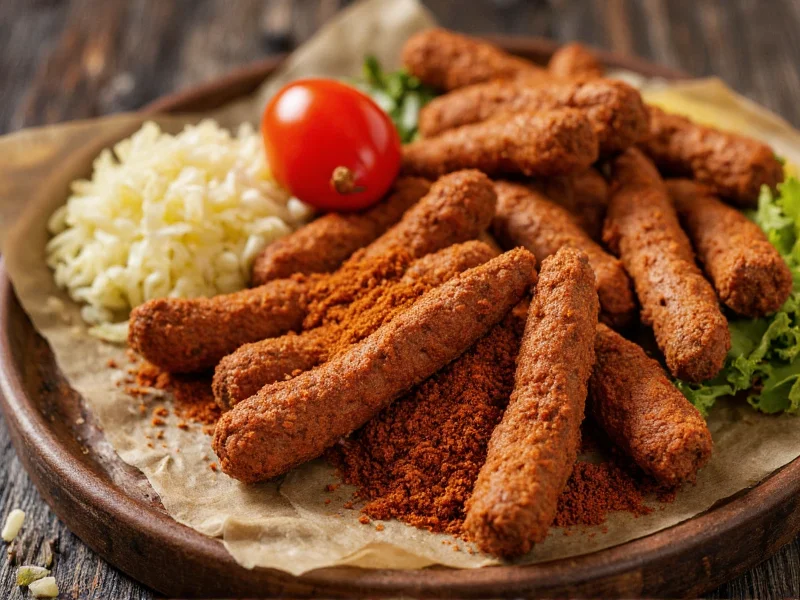Creating genuine Greek gyro seasoning requires understanding its cultural roots and precise spice balance. Unlike commercial blends that often include fillers or artificial flavors, authentic mixes rely on simple, high-quality ingredients that have been used in Greek cuisine for generations. This guide reveals the traditional approach to crafting gyro spice that delivers the complex, aromatic profile found in Athens street food stalls.
The Cultural Significance of Gyro Seasoning
Gyros (pronounced "YEE-ros") originated in Greece during the early 20th century, evolving from Ottoman doner kebab traditions. The spice blend reflects Greece's Mediterranean location where aromatic herbs grow abundantly. Authentic recipes vary by region—coastal areas emphasize lighter herb profiles while mountainous regions use more robust spices to complement game meats.
Core Components of Traditional Gyro Spice
True Greek gyro seasoning contains no mysterious ingredients or artificial additives. The magic lies in the specific ratios of common pantry staples:
| Spice | Traditional Role | Flavor Contribution |
|---|---|---|
| Dried Oregano (Greek variety) | Primary herb | Earthy, slightly bitter backbone |
| Freshly Ground Black Pepper | Essential heat | Warmth without burning |
| Garlic Powder | Flavor enhancer | Savory depth (never raw garlic taste) |
| Marjoram | Signature note | Sweet, citrusy complexity |
| Thyme | Supporting herb | Subtle floral notes |
Why Many Commercial Blends Miss the Mark
Supermarket "gyro seasoning" often contains paprika, cayenne, or excessive salt to create immediate flavor impact. Traditional Greek cooks avoid these because:
- Paprika wasn't historically available in Greece
- Authentic gyros rely on meat quality rather than spice heat
- Excessive salt masks the natural meat flavors
When evaluating homemade gyro spice mix authenticity, check for these red flags: bright red color (indicates paprika), overpowering heat, or chemical aftertastes. True Greek seasoning should smell fragrant rather than spicy when dry.
Perfect Homemade Gyro Spice Ratio
After consulting with Greek chefs and culinary historians, this ratio consistently produces authentic results:
- 3 parts dried Greek oregano (not Italian)
- 2 parts freshly ground black pepper
- 1½ parts garlic powder
- 1 part marjoram
- ½ part dried thyme
- ¼ part ground allspice (optional but traditional)
Mix thoroughly in a glass bowl, then store in an airtight container away from light for 24 hours before use. This resting period allows flavors to meld properly—a crucial step many home cooks skip when making authentic gyro meat seasoning.
Application Techniques for Restaurant-Quality Results
The proper method for using authentic gyro spice mix differs significantly from typical American interpretations:
- Combine 2 tablespoons spice mix per pound of meat with 1 tablespoon olive oil (never water)
- Massage mixture into meat for 3-5 minutes to ensure penetration
- Refrigerate for minimum 12 hours (24 hours ideal)
- Bring meat to room temperature before cooking
Lamb shoulder works best for traditional gyros, though pork loin makes an acceptable alternative. The spice should enhance—not dominate—the meat's natural flavor. When cooked properly, authentic gyro meat develops a subtle crust while remaining juicy inside.
Regional Variations Across Greece
While Athens-style gyros uses the blend described above, regional differences exist:
- Thessaloniki: Adds a pinch of ground bay leaf for earthiness
- Crete: Incorporates dried mountain herbs like dittany
- Islands: Lighter on pepper, heavier on oregano
- Mainland: Slightly more garlic presence
These variations reflect local agricultural traditions rather than arbitrary preferences. When making authentic gyro spice mix for specific regional styles, adjust proportions accordingly while maintaining the core flavor profile.
Storage and Shelf Life Guidelines
Properly stored, homemade authentic Greek gyro seasoning maintains peak flavor for 4-6 months. Follow these storage protocols:
- Use amber glass containers to block light
- Keep away from heat sources (not above the stove)
- Never store in plastic containers (absorbs flavors)
- Add whole peppercorns separately when grinding
Signs your spice mix has degraded include faded color, loss of aromatic intensity, or development of musty odors. Freshly made authentic gyro spice should have a vibrant, complex fragrance that fills the room when opened.
Common Mistakes to Avoid
Even experienced cooks make these errors when attempting traditional gyro seasoning:
- Using Italian oregano instead of Greek variety
- Adding liquid ingredients to dry spice mix
- Over-marinating causing meat texture issues
- Using pre-ground spices that have lost potency
- Incorrect meat-to-spice ratio (too heavy-handed)
Remember that authentic Greek cooking emphasizes balance. The spice should complement the meat, not transform it into something unrecognizable. When prepared correctly, traditional gyro spice creates that distinctive aroma that makes Greek restaurants so inviting.
What's the difference between gyro and souvlaki seasoning?
Gyro seasoning uses more oregano and marjoram with subtle allspice notes, while souvlaki seasoning features higher lemon and oregano proportions with added mint. Gyro blends focus on slow-cooked meat compatibility, whereas souvlaki seasonings work with quicker grilling methods.
Can I use fresh herbs instead of dried in authentic gyro spice mix?
Traditional Greek gyro spice mix uses dried herbs exclusively. Fresh herbs contain too much moisture and would spoil when stored. The drying process concentrates flavors essential to authentic gyro seasoning's characteristic profile.
Why don't authentic Greek gyro recipes include cumin?
Cumin isn't traditional in Greek gyro seasoning—it's more common in Middle Eastern preparations. Authentic Greek recipes rely on native Mediterranean herbs like oregano and marjoram that grow abundantly in Greece's climate.
How much meat does a standard batch of authentic gyro spice mix season?
A standard batch (¼ cup) of authentic gyro spice mix properly seasons 2-3 pounds of meat. The critical factor is thorough massage of the spice mixture into the meat rather than exact measurements, ensuring even flavor distribution throughout.
Does authentic gyro spice mix contain salt?
Traditional Greek gyro spice mix contains no added salt. Greeks season meat with salt separately during cooking, allowing precise control. Adding salt to the dry spice mix causes inconsistent seasoning and can draw moisture from the meat during marination.











 浙公网安备
33010002000092号
浙公网安备
33010002000092号 浙B2-20120091-4
浙B2-20120091-4